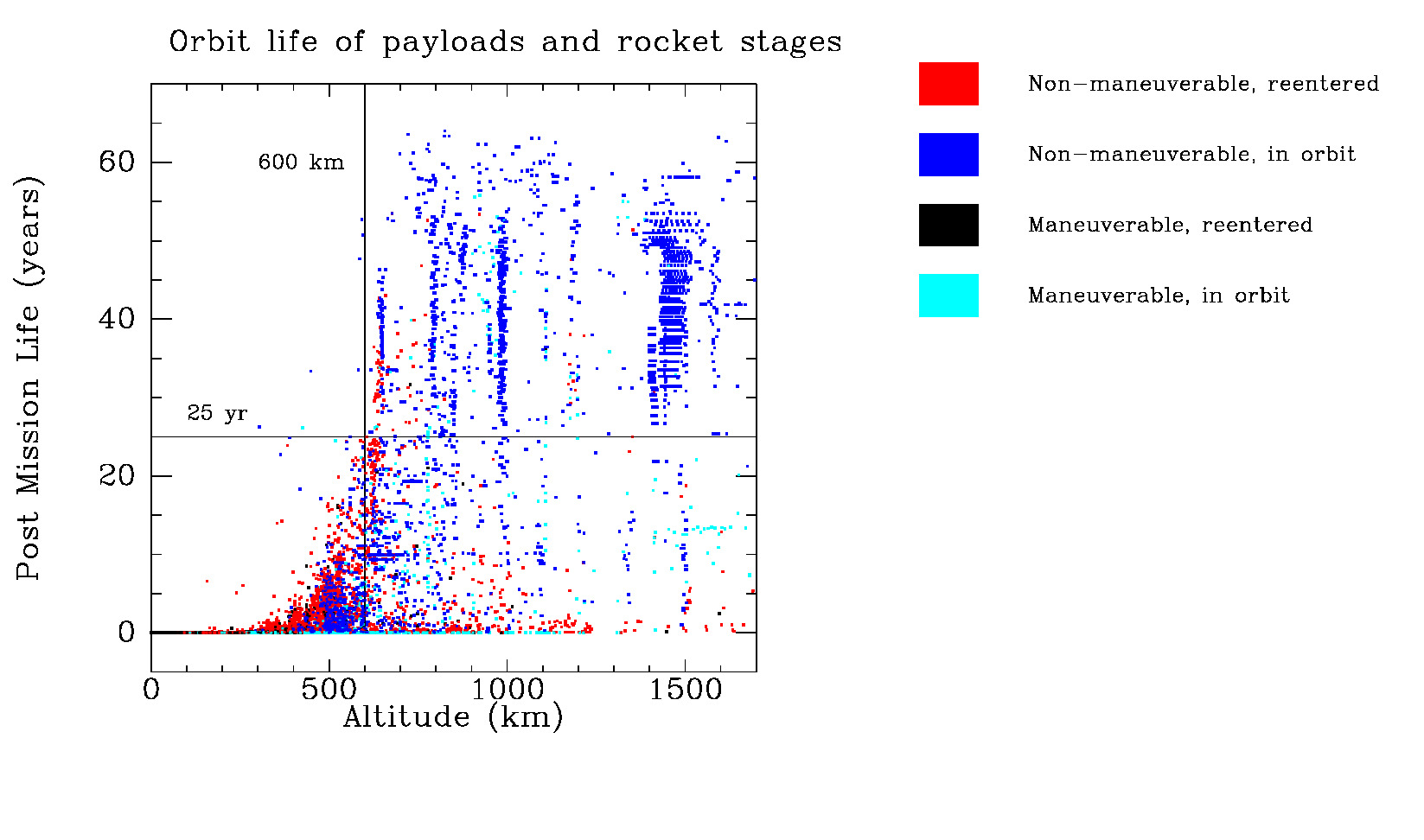Post mission life vs altitude in LEO
The post-mission life is defined as L = t(R) - t(M), where t(R) is the date of reentry into the atmosphere and t(M) is the date of the last orbital manuever.
For manoeuverable satellites, I assume t(M) is the end of life date for the satellite as noted in the GCAT payload catalog. For non-manoeuverable objects, I assume t(M) is the day of launch.
For objects which have not yet reentered (distinguished by a different color in the plot below) a lower limit to L is plotted using L > t(now) - t(M).
The altitude is calculated using the first orbital dataset more than 2 days after end of mission. The two-day padding is used to avoid data problems of various kinds.
The plot shows that objects below 600 km reenter quickly, while objects in higher orbits may stay up for decades to centuries. Note that this plot makes no attempt to correlate lifetime with the solar cycle. In fact, between 400 and 600 km, the lifetime is strongly dependent on the solar cycle, but almost always less than 25 years (about 2 cycles).
 |
| Data |
| Post-mission life versus altitude at end of mission |